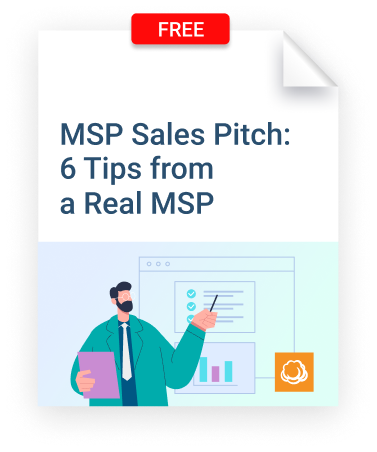Many MSPs rely on selling hardware as a way to generate additional revenue. While this source of revenue can help MSPs to boost their top lines, it can also create unwanted friction between them and their clients if they’re not initially straightforward about marking up hardware products.
Even though many business owners probably assume you’re marking up your hardware, there are some who may not. These are the clients you must take the necessary steps to educate properly.
When selling hardware to clients, you shouldn’t have to worry about marking up your products — as long as you’re transparent by being upfront with your additional costs when discussing their options.
What if Someone Finds out About Your Markups?
No matter how hard you try, you can’t hide hardware costs from your clients. Believe it or not, your clients are smarter than that. They may also be a bit skeptical of your advice from the onset, especially if they’ve never worked with MSPs before, so when you’re building your relationships with them, do your best to be completely transparent about your services and the products you deliver.
All it takes is one curious office manager to destroy your relationship with a client. Anyone can easily price-check the hardware you’re selling, so avoid putting yourself in this vulnerable situation by disclosing any additional hardware costs with your customers upfront. Honesty is the best policy.
Be Upfront With Your Customers
Even though marking up hardware is commonplace in our industry, clients may not be aware of this. Be upfront with them about your additional costs. When you immediately explain to your clients why your prices are higher than those they may find on Amazon or elsewhere, you gain their respect by being truthful with them. This frankness usually strengthens your relationships with your clients, too.
A little trust goes a long way. If they trust you, instead of pushing back on your recommendations, your clients may begin accepting them — and that's what you want. You want your clients to see you as an advisor, an expert in your field, someone who knows better than they do when it comes to their technology needs. Honesty can get you where you need to be — and it’s also what keeps you there. But honesty alone isn’t how you can prepare clients for markup costs on your hardware.
Further reading 10 Tips to Improve Your Customer Service
Even When Selling Hardware, Your Expertise Is Valuable
Sometimes clients forget they’re not just paying for you to deliver your services. You’re charging them for your years of experience, too. Your expertise is the value you’re providing them, so consider how much your time is worth and charge accordingly. Apply this same rationale to marking up hardware.
Good research takes time and, as we all know, time is money. It’s true; your clients can probably find hardware cheaper elsewhere. But they won’t necessarily know what to purchase or have the time it takes to investigate thoroughly what’s needed to get them up and running in a timely manner. This is where you can simply swoop in as the expert and provide your valuable insight into the matter at hand. Clients are more than willing to pay extra for that, as long as they know what they’re getting.
You don’t need to feel ashamed for marking up your hardware. It’s part of your business. Just keep your clients informed about any additional costs they may incur.






